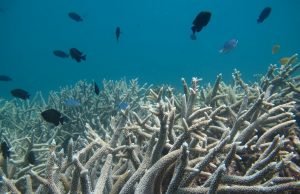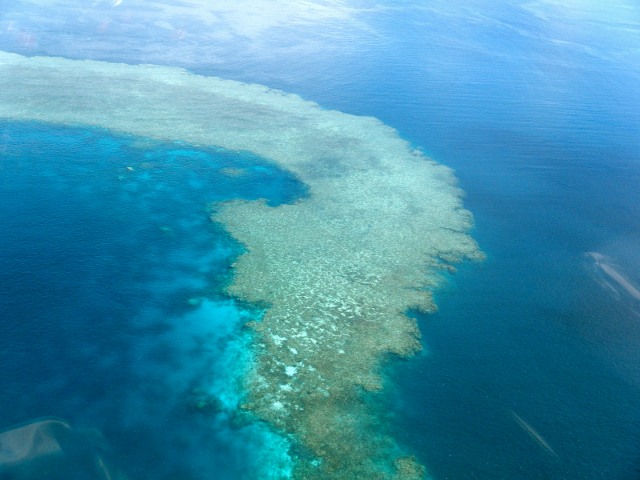Our coral reefs are feeling the heat – and new research from a team that includes Griffith University researchers has found that corals are making ‘cloud umbrellas’ to stay cool.
Associate Professor Albert Gabric, Dr Roger Cropp and Dr Dien van Tran from the Griffith School of Environment and Science were part of the team that included researchers from Southern Cross University and the University of Southern Queensland whose findings were published in the journalAMBIO.
The team’s analysis of a 15-year time series of satellite-derived data on atmospheric aerosols over the reef revealed that corals are seemingly protecting themselves from ‘stresses’ – such as high water temperatures and high irradiance and the bleaching events related to them – by producing and releasing aerosols into the atmosphere to create an ‘umbrella of cloud cover’ to help cool them down.
Associate Professor Gabric has worked in marine aerosols for 25 years and said while the ability of phytoplankton to produce aerosols was well known, this research is the first time a connection has been made between the stresses corals are undergoing with the aerosols that have been detected above them in the atmosphere.
“Until recently, scientists didn’t really appreciate that corals could produce these compounds that end up in the atmosphere and are converted through chemical reactions to aerosols,” Associate Professor Gabric said.
“Corals appear to have this protective mechanism through aerosol production. What happens to these aerosols when they get into the atmosphere is that they reflect incoming solar radiation and can also modify cloud microphysics – they can make clouds brighter and they can make clouds hang around for longer, so it’s sort of like creating a natural umbrella for the reef.”

The team of scientists looked at the satellite data from an area of about 100 by 100 kilometres centred around Heron Island, which sits in the southern region of the Great Barrier Reef off the Queensland coast.
The data, field work and lab work revealed that if corals were under stress due to very strong irradiance (eg during periods of low tides) they protected themselves by releasing volatile compounds into the sea which eventually become aerosols in the air above them, contributing to the formation of low level clouds. And the implications of that are quite far reaching, according to Associate Professor Gabric.
“The reef does create similar compounds to those produced when you burn fossil fuels, but coral aerosols are naturally produced and they have the same direct affect on incoming solar radiation – they reflect incoming radiation but more than that they change the lifetime and reflectivity of the clouds,” he said.
“The thing we know least about climate change is how both natural and anthropogenic aerosol emissions will change in the future. This is critically important because aerosols appear to have a cooling affect, cancelling or masking the warming due to greenhouse gases. And that’s the trillion dollar question – if countries stop producing these polluting aerosols what will happen to the underlying warming?”
Atmospheric aerosols only have a lifetime of a few weeks in the atmosphere, and if pollution control methods are enacted around the world to curb emissions and thereby reduce pollutant aerosols, scientists hold concerns about the cooling effect of aerosols being removed. This sudden reduction of aerosol concentrations could lead to an abrupt warming over a short period of time, which Associate Professor Gabric said “could be disastrous”.
“It’s crunch time for coral reefs around the world. There’s been several bleaching events in the last decade. It’s time to do something but it’s not clear how quickly that intervention will happen,” he said.
“The sort of reef management intervention that could be used in the future include geo engineering, like generating artificial aerosols by spraying sea salt into the air above the reef. But on a large scale this would be quite expensive, so we need further research on how best to maintain and encourage natural coralline aerosol emissions.”
